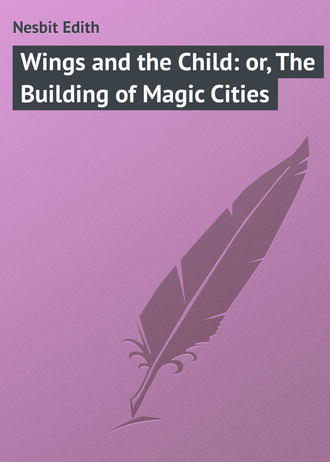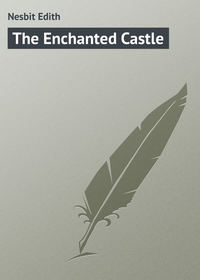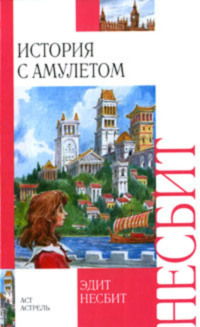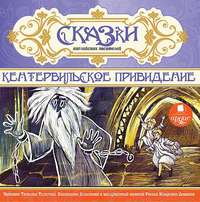
Wings and the Child: or, The Building of Magic Cities
You will be amazed at the results you can achieve with quite dull-looking materials, and still more will you be surprised at the increasing interest and skill of the grown-ups. When it is time to dress for dinner you will feel a pang of positive despair at the thought that your beautiful city, the child of your dreams and skill, must be taken down. It is like the end of the magic of Cinderella when her coach became a pumpkin, her horses mice and her coachman a fat rat. Now your domes are once more mere basins, your fountain basins are ash-trays, your fountains are but silver pen-cases and their gleaming waters only strips of the tin-foil that comes off chocolate or cigarettes. The walls of your palaces go back into the book-cases, and their façades return to the dull obscurity of the brick-boxes. The doors and the animals who stood on guard at the door-ways and terraces, on plinths or pillars, share in the dark rattling seclusion where many a wooden tail has been broken, many a painted ear lost for ever, but the tidying up has to be done: unless your hostess is one of those rare and delightful people who see what their guests like and lets them do it. In that case she may say "Oh! what a pity to disturb the pretty thing! Why not let your city stay for a day or two, so that the children can build some more to it to-morrow. No, of course it won't be in the way – and wouldn't it be pretty if we lighted it up with fairy lights after dark?"
Then your city really has a chance. The children will think of it till bed-time and fall asleep in the happy throes of their first town-planning.
You may think that I exaggerate the charms of magic cities, because I happened to invent them, and you may be afraid that my swan, if you ever make up your mind to adopt it, may turn out to be an ugly and dispiriting duckling. I assure you this is not so. I have never met a child who did not like building magic cities, and not many grown-ups. Of course the love of them grows, like other loves, and the longer you can keep the city standing, the fonder you and your playmates will get of it. It will grow more and more finished in detail, and the ugly make-shifts will be reorganised and made neat with an irreproachable neatness. If the magic city game were played in schools, as I think it ought to be, a long table – or series of tables – could easily be kept for it, and the city kept standing and be added to from day to day. But it will not be the same sort of city as the one you build in the house where the parlour-maid lives and still less the sort that happens in the house where there is a butler and many silver boxes and cups and candlesticks.
Now I come to write all this down it seems very trivial, and it will perhaps seem even more so when I come to tell you about the different things we made and used for magic cities. But it is not really trivial. I do not think I claim for the magic city game more than it justifies, and I will tell you, presently, why I think this. Of course, when you have finished your city, if you ever do finish it, you make up stories about it, and always, even when you are building it, you imagine how splendid it would be if you were small enough to walk through the arches of your city gates, to run along the little corridors of your city palaces. Of course, it would do quite as well if your city became big enough for you to run about in while still keeping your natural size – but it is somehow not really so cosy to think of.
When I had built my first three or four magic cities this idea of getting into the city – being, of course, correct citizen-size – lived with me so much that I wrote a story-book about it called The Magic City,1 in which a boy and girl do really become the right size and enter into the city they have built. They have there all the adventures whose wraiths danced before me when I was building courts and making palm trees and finding out the many fine and fair uses of cowries and fir-cones.
This book, The Magic City, produced a curious effect. I hope I shall not look conceited (because really I am only proud) when I say that about my books I have had the dearest letters from children, saying pretty things about the stories in the prettiest way. It is one of the most heart-warming things in the world to get these letters and to answer them. And if I had letters like these I should have been only pleased and not disturbed. But the letters about the Magic City, though they were full of the pretty, awkward, delicious things that children write to the author of the books they like, held something else – a demand, severe and almost unanimous, to know how magic cities were built, and whether "children like us" could build one, and, if so, how? I got so many of these letters that I decided to build a magic city where any child, in London at any rate, could come and see it. And I built it at the Children's Welfare Exhibition which the Daily News arranged last year at Olympia. The history of that building would make a largish and intimate volume. The difficulties that beset a home-dweller when she goes out into the world, the anguish of misunderstandings which arise between the builder of magic cities and the people who lay linoleum and put up electric lights, the confusion which results from having packed in boxes and all mixed up the building materials which you are accustomed to look for as you need them in your own home, the extraordinary mass of people, the extraordinary kindness of people; for after all, it is the kindness which stands out. It is true that the gentleman who, very much isolated, fixed the electric lights, behaved exactly like an earthquake, upsetting two temples, a palace, and a tank with an educated seal in it. But then how more than a brother was the man who did the whitewash! It is true that the dictator with the linoleum – but I will not remember these things. Let me remember how many good friends I found among the keepers of the stalls, how a great personage of the Daily News came with his wife at the last despairing moment, and lent me the golden and ruby lamps from their dining-table, how the Boy Scouts "put themselves in four" to get me some cocoa-nuts for roofs of cottages, how their Scout Master gave me fourteen beautiful little ivory fishes with black eyes, to put in my silver paper ponds, how the basket-makers on the one side and the home hobbies on the other were to me as brothers, how the Cherry Blossom Boot Polish lady gave me hairpins and the wardens of Messrs. W. H. Smith's bookstall gave me friendship, how the gifted boy-sculptor for the Plasticine stall, moved by sheer loving-kindness, rushed over one day and dumped a gorgeous prehistoric beast, modelled by his own hands, in the sands about my Siberian tomb, how the Queen of Portugal came and talked to me for half an hour in the most flattering French, while the Deity from the Daily News looked on benign.
These are things I can never forget. When the show opened I was feeling like a snail who has inadvertently come out without his shell. Think how all this kindness comforted and protected me. And then came the long stream of visitors – crowds of them – I don't know how many thousands, who came and looked at my magic city and asked questions, and looked and looked at it, looked and said things. It is because of what they said that I am writing about that show at all. They all liked the city except two, and I cannot think that those two were, in other respects, really nice people. And more than half of them asked whether I would not write a book about the magic city which I had built there, and which lay looking so real and romantic under the soft glow of the tinted lamps: not a story-book, but a book to tell other people how to make such cities. And I said I would tell all I knew in a book. And when I came to write I found that there were many other things that I wanted to write about children, and other things than magic cities, and I wrote them, and this is the book.
And the reason I am telling you all this is that my big magic city at Olympia showed me, more than anything else could have done, that the building of magic cities interests practically every one, young or old.
It is very difficult to say all this and yet not to feel that you will think that I am boasting about my magic city. But I want you to believe that it was very beautiful, and that you can build one just as beautiful or much more beautiful if you care to try it. It is such an easy game. Every one can play it. And every one likes it – even quite old people. By the way, I have been asked to build another city at Olympia in April, and I hope that it will be a prettier one even than the other which I loved so.
CHAPTER III
Bricks – and Other Things
It is a mistake when you are going to build a city to make too large a collection of building materials before you begin to build. If it is natural to you to express yourself by pencil lines on paper you might perhaps draw an outline of the masses of your city as you see them in the architect's vision or illumination which should precede all building, either of magic cities or municipal cab-shelters. Having roughly indicated on paper the general shape of your city as you look at it from the front – the shape it would have against the western sky at dusk (I think architects call this the elevation, don't they?) – you proceed to collect such material as will roughly indicate that shape on the table or other building-place. And here let me once more warn the builder new to his business not to be trapped by the splendid obvious bait of floor's wide space. To build palaces while prone on the stomach may be natural and easy to extreme youth. To grown-up people it is agonising and impossible. The floor has only two qualifications as a building site. It is large – larger at least than any of the pieces of furniture which stand on it – and it is flat. And when you have said that you have said all. Whereas the inconveniences of the floor as a place for building are innumerable. The floor is draughty, it is inaccessible, except from the attitude of the serpent, and the serpent's attitude, even if rich in a certain lax comfort, is most unfavourable for the steady use of both hands. If you want to see how unfavourable assume that attitude and try to build a card-house on the floor. You cannot do it. If you kneel – well, you know how hard the floor gets if you kneel on it for quite a little time; if you sit or squat your dress or your coat-tails insist on playing at earthquakes with your building. Also the city on the floor is liable to hostile invasion by cats or dogs or servants: to the crushing and scattering by short-sighted outsiders or people who rush into the room to look for something in a hurry. Think of a playful elephant in some Eastern court of carved pearl and ivory lattice; an elephant co-inciding with one of the more fanciful volcanic eruptions, and your conception will pale into placidity in the face of the spectacle of a normal puppy in a floor-built city. And on the floor things not only get broken, they get lost. Cotton reels roll under sofas, draughts bowl away into obscurity and are only found next day by the housemaid when she moves the fender, and not then, as often as not; chess kings are walked on and get their crowns chipped; card counters disappear for ever, and it is quite impossible for you to keep an eye on your materials when you are grovelling among them. Therefore build on a table – or tables. Tables of different shapes, heights, and sizes make beautiful sites for cities. And bureaux are good, if you may take the drawers out and empty the pigeon-holes. I remember a wonderful city we made once: it was called the "City of the Thousand Lights," and it was built on a bureau, two large tables and three other smaller ones, all connected by bridges in the handsomest way. (The lids of the brick boxes make excellent bridges and you can adorn them to your fancy, and make impressive gate-houses at each end.) The bureau was the Temple of Mung, and we sacrificed a pale pink animal from the Noah's Ark at the shrine of this, the most mysterious of the Gods of Pegana. The thousand lights – there were not a thousand, really, but there were many luminous towers, with windows of a still brighter glow. You make them by putting a night-light in a tumbler – a little water first by way of fire insurance – and surrounding the tumbler by a sheet of paper with windows and battlements and fixed to a cylindrical shape by pins. The paper cylinders are, of course, fitted on outside the tumblers so that there is no danger of fire. All the same it is better to let a grown-up do the luminous towers.
Having chosen your site and blocked out the mass of your buildings, you begin to collect the building material. For my own part I see the city I am going to build in the eye of the mind – or of the heart – so vividly and consistently that I never need to make notes of it on paper. I know when what I am building is not in accord with the vision, and then I pull it down. Truly in accord it never really is, but it approximates.
Now when you have seen the silhouette of your city and begin to look for stuff to build with, you will instantly find that everything you can lay your hands on is too small. The bricks, even the boxes which contained them, are suited for the detailed building which is to come later, but now you want something at once bigger and less conventionally proportioned. Now is the time to look for boxes – not the carved sandal-wood boxes in which aunts keep their pins, nor the smooth cedarwood boxes in which uncles buy their cigars, though both these are excellent when you come to the details of your work, but for the mass you want real big boxes; if you have a large table, or tables, Tate's sugar boxes are not too large. Also there are the boxes in which starch is packed, and cocoa, and the flatter boxes which the lady at the sweet-shop will give you if she likes you, and sell to you for a penny anyhow. The boxes in which your father gets his collars, and the boxes in which your mother gets her chocolates, though not really large, should be collected at the same time, because they need the same treatment. I am assuming now that you are not building a city for an afternoon's amusement, but one for which you have found a safe resting place – a city that may take days to build and will not be disturbed for days. If you can once found your city in a safe place, and you are working at it day after day, you will go on thinking of more and more things to be added to it, and it will grow in beauty under your hands as naturally as a flower under the hand of summer.
You have now your collection of boxes – but they are of plain, rough wood, and probably disfigured by coarse coloured printed papers telling what the boxes once held. These papers you wash off, and when the boxes are clean and dry, you paint or colour-wash them to suit your requirements. Now your requirements are large blocks of colours to match your bricks, and bricks are of three colours – white, terra-cotta, and stone colour.
The stone bricks are stone colour and terra-cotta – oak bricks are very nearly stone colour – and there are white-wood bricks. To these three I would add a dark brown; and as this dark brown is not sold in boxes at the shops, you had better colour some of your bricks with it for yourself. Dark wood in a city gives a wonderful richness and helps the lighter colours more than you would think possible. A city in which some buildings are of dark wood will have an air of reality never achieved by a city where all is red or white or stone colour. By the way, among the stone bricks there are some blue ones, but you will always have enough of them, for they are the last things you will ever want to use.
Your boxes then must be coloured either white, red, stone colour, or dark brown. In the white use either white paint – flat, not shining, or if that cost too much trouble and money, whitewash made of whitening, size, hot water and a pinch of yellow ochre or chrome powder to give it a pleasant ivory creaminess. There should be a good deal of size so that the whitewash does not come off on every thing.
The red boxes can be painted to match the red bricks, or colour-washed (whitewash as before, but red ochre for colour).
Stone colour is not a very satisfactory tint and too much of it makes for gloom. The lids and bottoms of the brick boxes will generally give you as much of it as you want. But if you desire stone colour you can make it by putting a pinch of raw umber in the whitewash. Or you can paint your boxes with this uninteresting tint – resembling the doors of back kitchens. With these paints or colour-washes you can make your odd many-shaped boxes into smooth-surfaced blocks to match your bricks: and not only wooden, but cardboard boxes can be treated in this way. All these colours can be bought in gigantic penn'orths at the oil-shops. But when I come to the dark brown, which I confess is my favourite colour, no cardboard box will serve your turn. You must choose clean, smooth wood, because the brown colouring is transparent, and the grain will show through. Your bricks will be smooth enough, and if the boxes are not smooth a little sand-paper will soon subdue their rough exterior. I suppose you know how to use sand-paper? If you just rub with your fingers you hurt your fingers and don't make much progress; the best way is to wrap the sand-paper round a flat piece of wood – a wooden brick will do – and rub with that.
When your wood is all smooth you mix your stain. And here I make a present to all housewives of the best floor stain in the world. Get a tin of Brunswick black – the kind you put on stoves – and some turpentine. Mix a little of the black and a little of the turpentine in a pot and try it on the wood with a smooth brush – a flat brush is the best – till you have the colour you want, always remembering that it will be a little lighter when it is dry. When you have decided on the colour, paint your bricks and boxes on five out of their six sides lightly and smoothly, keeping to the grain of the wood, and not going over the same surface twice if you can help it. This is why a flat brush is the best: it will go right down the side of a brick and colour it at one sweep. Then stand each brick up on end to dry. When it is dry you can paint the under bit on which it has been standing. While you have stains and colours going it is well to colour some of your arches, and also such things as cotton-reels, and the little wooden pill-boxes that you get at the chemist's. Before colouring these boxes fill them with sand or stones and stick the lids on with glue. Otherwise they will not be heavy enough to build with happily.
This painting or colouring should be done out of doors, or in an out-house, if possible. If you have to do it in the house spread several thicknesses of newspaper before you begin, and make a calm resting place for your painted things where they can dry at leisure and not be scarred with the finger-marks of her who "clears away."
The earnest builder will keep a watchful eye on any carpentering that may go on in the house, and annex the smaller blocks of wood cut off the end of things, which, to an alien eye, are so much rubbish, but which are to the builder stores of price.
If there are a few shillings to spare, the carpenter will, for those few shillings, cut you certain shapes which you cannot buy in shops – arches of a comfortable thickness and of satisfying curves, and slabs of board for building steps. These should be of varying lengths and thicknesses and made in sets of twelve steps, with two boards to each step, twenty-four slabs to a set. The biggest might be 1 in. thick and the bottom and largest slabs 12 by 6 in., lessening to 6 by 1 in. The next set might be ¾ in., and of corresponding proportions, then ½ in., then ¼ in. The two basic slabs of the ¾ in. would be 9 by 4½ in., and those of the ½ in. would be 6 by 3 in. A set with ¼ in. steps (the basic slabs 3 by 1½ in.) would complete the set. Flights of steps of many varying heights and sizes could be built with these slabs. Ask the carpenter – if the shillings are forthcoming – to save for you the curved pieces of wood which come out of the arches. They are very useful for the bases of pillars, for towers and for the pedestals of statues or vases. Some of the arches, steps, and blocks should be coloured to match the red, white, and brown bricks.
Some of the boxes, particularly the larger ones, should have doorways sawn in them on opposite sides – it is pleasant to look through a building and see the light beyond; and if you are a thorough builder you can make a pillared interior which will delight the eyes of those who stoop down and peer through the doorway. A few narrow, oblong windows, high up, will also be useful. You need not show them unless you wish: you can always conceal them by a façade of bricks.
Another pleasant use of a big box is to cut out the top and sides and make a columned court of it, which, when cream-washed, dignifies your city with almost all the glory that was Greece and the grandeur that was Rome. The columns are cut from broom-handles – twopence each at the oil-shop, or, in the case of smaller boxes, from those nice round smooth wooden sticks which cost a penny and are used in ordinary life to thread window-blinds on.
If you are going to make a city which is to stand for some time, a little thin glue is a good help to stability. If it is only a here-to-day-and-gone-to-morrow city, Plasticine is good – the least touch of it seeming to make things safe which otherwise might totter to their ruin. But except as mortar Plasticine should be shunned. It is not good as a building material.
Having now your bricks, boxes, arches, steps, and rounds, you may begin to block out your building. Quite soon you will begin to find that everything is too rectilinear. Even the arches and the rounds and the pillars and the pill-boxes cannot satisfy your desire for curves. This is the moment when you will begin to look about you for domes. And the domes, on the instant of their imposition in your building, will call out for minarets. It is then that you will wander about the house seeking eagerly for things that are like other things. Your search will be magnificently successful, if only the lady of the house has given you a free hand, and you have been so fortunate as to secure the sympathies of the kitchen queen.
CHAPTER IV
The Magic City
The only magic in the city is the magic of imagination, which is, after all, the best magic in the world. The idea of it came to me when I was dissatisfied with the materials provided for children to build with, and I think it must be a really true idea, because wherever I have applied it, it has worked, and that, I am told, is in accordance with the philosophy of pragmatism and a characteristic of all great discoveries. You may build magic cities in homes of modest comfort, using all the pretty things you can lay your hands on. You may build them in the mansions of the rich, if the rich are nice people and love cities, and if the butler will let you have the silver candlesticks for pillars, and the silver-gilt rose-bowls for domes; and you could build one in the houses of the very poor, if the very poor had any space for building – build them there and not use a single thing that could not be begged or borrowed by an intelligent child, no matter how poor.
Children love to build. I still think with fond affection, and I am afraid speak with tiresome repetition, of those big oak bricks which we had when we were children. They disappeared when we left the old London house where I was born. It was in Kennington, that house – and it had a big garden and a meadow and a cottage and a laundry, stables and cow-house and pig-styes, elm-trees and vines, tiger lilies and flags in the garden, and chrysanthemums that smelt like earth and hyacinths that smelt like heaven. Our nursery was at the top of the house, a big room with a pillar in the middle to support the roof. "The post," we called it: it was excellent for playing mulberry bush, or for being martyrs at. The skipping rope did to bind the martyrs to the stake. When we left that house we went to Brighton, where there was a small and gritty garden, where nothing grew but geraniums and calceolarias. And we did not have our bricks any more. Perhaps they were too heavy to move. Perhaps the Brighton house was too small for the chest. I think I must have clamoured for the old bricks, for I remember very well the advent of a small box of deal bricks made in Germany, which had indeed two arches and four pillars, and a square of glass framed in wood daubed with heavy, ugly body colour, and called a window. But you could not build with those bricks. So there was no building at Brighton except on the beach. Sand is as good as anything in the world to build with – but there is no sand on the beach at Brighton, only sandiness. There are stones – pebbles you call them, but they are too round to be piled up into buildings. The only thing you can play with them is dolls' dinner parties. There are plenty of oyster shells and flat bits of slate and tile for dishes and plates – and it is quite easy to find stones the proper shape and colour for boiled fowls and hams and roast legs of mutton, German sausages, ribs of beef, mince pies, pork pies, roast hare or calf's head. But building is impossible.







